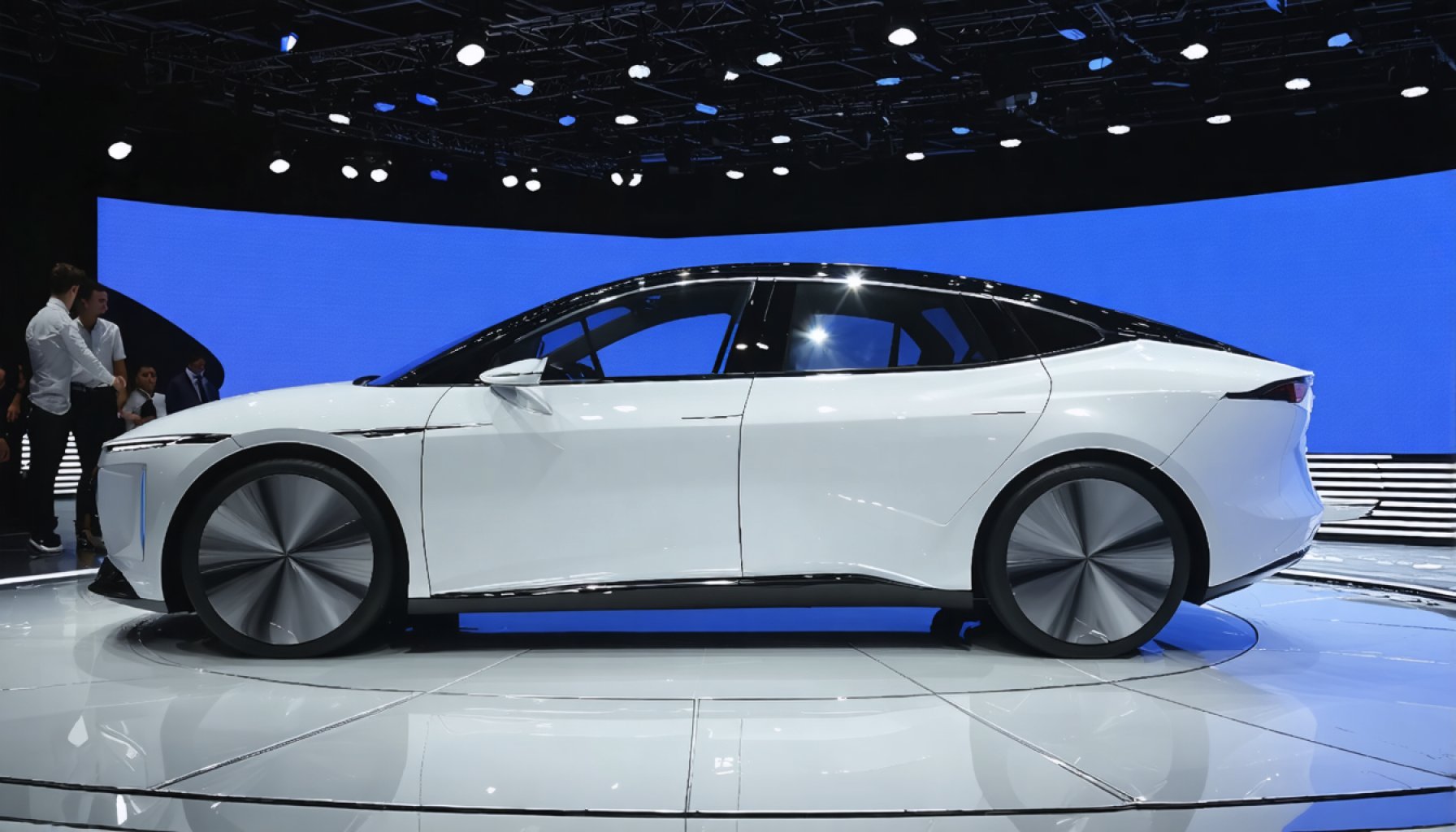- BYD, a Chinese automaker known for innovation and affordability, surpassed Tesla in annual EV sales, attracting global attention.
- Its rapid expansion underscores significant market influence, especially in Europe, where electric vehicle demand is high.
- Despite its success, BYD faces challenges entering the U.S. due to high tariffs on imported cars.
- BYD’s competitive edge lies in swift charging, diverse features, and strategic pricing, offering high quality at lower costs.
- The electric vehicle sector is seeing a major rivalry between Tesla and BYD, enhancing innovation and consumer choices.
- This competition signals a potential shift in the EV landscape towards more sustainable and advanced transportation options.
On a bustling highway, a Tesla wrapped in a cryptic disguise zooms past, piquing curiosity and sparking speculation. Some whisper that if it could shed its Tesla skin, it might reveal the prowess of Chinese automaker BYD—an emerging titan in the electric vehicle industry.
BYD, officially known as Build Your Dreams, took center stage when it overtook Tesla in annual sales last year, capturing the global market’s attention. Founded in Shenzhen and known for its rapid innovation and competitive pricing, BYD draws comparisons with established Western giants like Tesla. With a bold approach, the company crafts vehicles that boast swift charging times, an array of cutting-edge features, and a price tag that leaves competitors envious.
Yet, despite its staggering growth trajectory, BYD’s journey is not without restrictions. Its entry into the United States remains a dream deferred, thanks to steep tariffs on imported passenger cars—an economic barrier that strangles many foreign automakers’ aspirations on American soil.
Beyond the borders of the U.S., however, BYD is flourishing. Its influence is ever-expanding in Europe and other parts of the world where demand for electric vehicles is surging. Enthusiasts marvel at the brand’s ability to produce high-quality vehicles while keeping costs in check—a feat achieved through years of strategic planning and aggressive innovation.
As BYD continues to scale new heights and penetrate global markets, the electric vehicle landscape might soon witness a shift. The narrative once ruled by Tesla now faces the prospect of dualism, with BYD emerging as a formidable competitor. The saga of these industry giants underscores a pivotal message: In the race towards sustainable transportation, agility, adaptability, and a relentless pursuit of innovation fuel the journey towards global dominance.
The world watches closely, anticipating which company will eventually steer the direction of the electric vehicle revolution. As the rubber meets the road, one thing is clear—competition breeds excellence, and consumers stand to benefit from this evolving electrified battleground.
Is BYD the Real Challenger to Tesla’s Throne in the Electric Vehicle Market?
BYD’s Rise in the Electric Vehicle Arena
Background and Growth:
BYD, short for Build Your Dreams, has gained global recognition by surpassing Tesla in annual sales in 2022, showcasing its potential as a leading electric vehicle (EV) manufacturer. Headquartered in Shenzhen, China, BYD has capitalized on innovative technologies and competitive pricing to propel its rapid expansion in the EV market.
Strategic Innovations:
BYD’s vehicles are known for swift charging capabilities, extensive technological features, and affordability. These attributes have enabled the company to compete with Western behemoths like Tesla, offering consumers attractive alternatives in the electric car sector.
Challenges and Opportunities
U.S. Market Constraints:
Despite its successes, BYD faces significant hurdles entering the U.S. market. The imposition of high tariffs on imported cars represents a substantial economic challenge for many foreign automakers, including BYD, making it difficult for the company to penetrate this lucrative market.
Global Expansion:
Outside the United States, BYD has been making significant strides. The company has expanded its reach in Europe and other regions where demand for electric vehicles is accelerating. They have successfully managed to produce high-quality, cost-effective vehicles, owing to meticulous strategic planning and relentless innovation.
BYD vs. Tesla: A Comparative Overview
Features and Competitive Edge:
– Charging Technology: BYD excels with fast-charging technologies, giving it an edge in markets where charging infrastructure is still developing.
– Price Competitiveness: BYD offers highly competitive pricing, making electric vehicles accessible to a broader range of consumers.
– Innovation and Range: Both companies are committed to innovation. However, BYD’s diverse product line, including electric buses and trucks, gives it a unique edge in broader market applications.
Pros and Cons:
– Pros: Affordable pricing, advanced technological features, broad product range.
– Cons: Limited presence in the U.S., dependency on Chinese markets, brand recognition compared to Tesla in Western territories.
Industry Trends and Predictions
EV Market Forecast:
– Growth: The global electric vehicle market is expected to grow at a compound annual growth rate (CAGR) of about 29% from 2023 to 2030, presenting immense opportunities for players like BYD and Tesla.
– Sustainability Initiatives: As sustainability continues to drive consumer preferences, companies offering green solutions, energy-efficient technologies, and low-emission vehicles will be favored in the market.
Future Outlook:
The competition between BYD and Tesla is likely to intensify, leading to further advancements in EV technologies, diverse offerings, and improved consumer experience. This competition is expected to lead to more sustainable and affordable transportation options globally.
Actionable Recommendations for Consumers
1. Stay Informed: Keep abreast of the latest developments in EV technology and market offerings to make informed purchasing decisions.
2. Consider Total Cost of Ownership: Beyond the initial purchase price, consider factors such as maintenance, charging infrastructure, and tax incentives.
3. Evaluate Brand Options: Explore different brands to determine which best meets your needs regarding features, cost, and practicality.
For more insights on electric vehicles and emerging technologies, visit Tesla and BYD Global. These pages offer valuable information on their latest models and technological advancements in the EV market.
